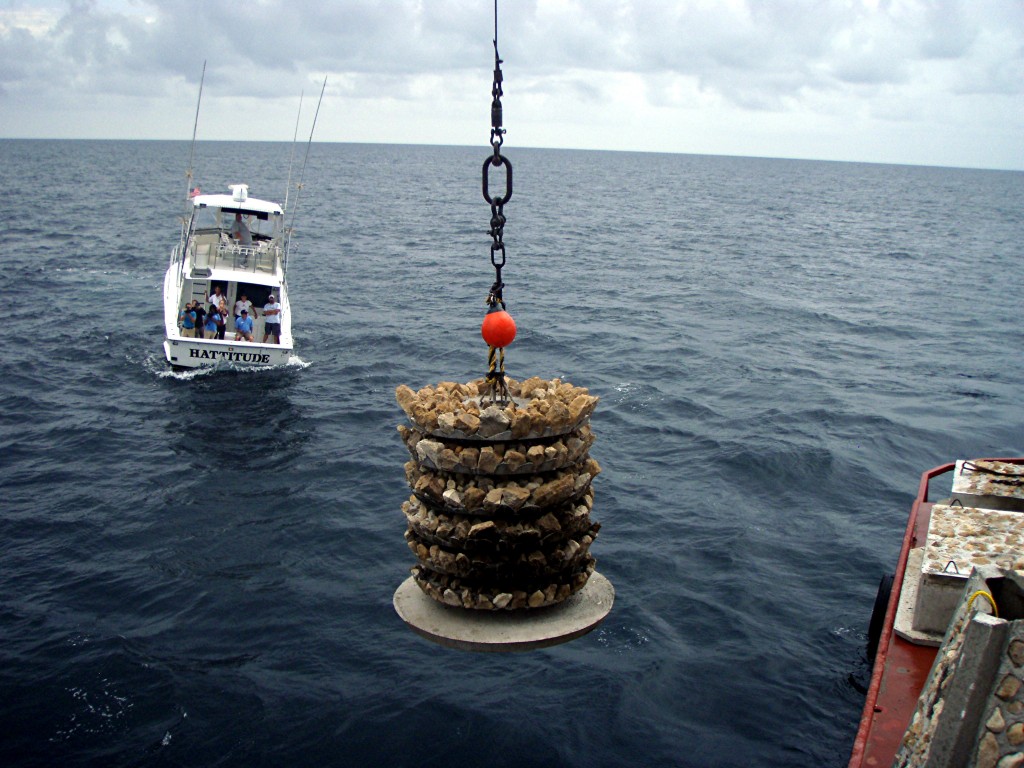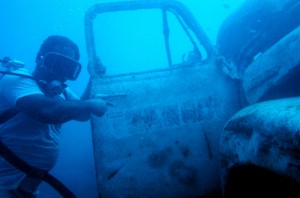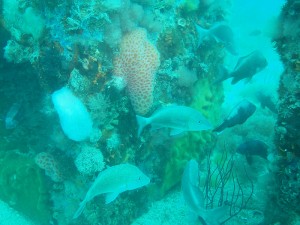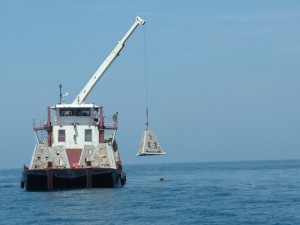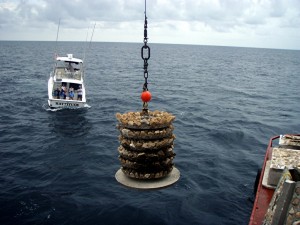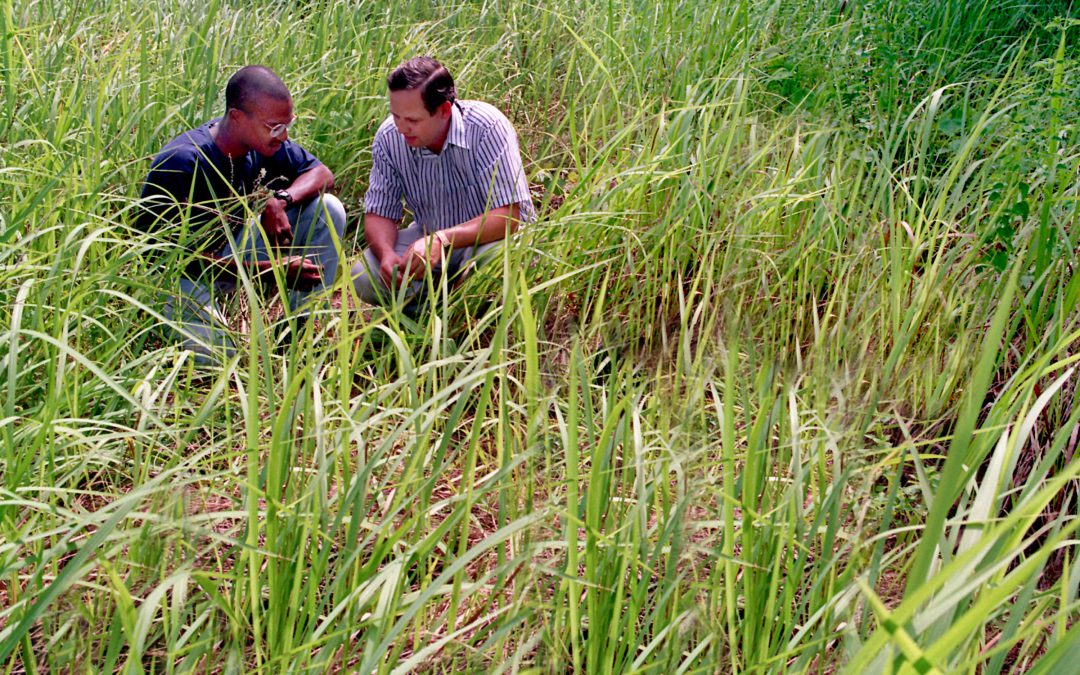
NISAW: Working Across Boundary Lines: Because Invasive Species Do Not Recognize Your Posted Sign
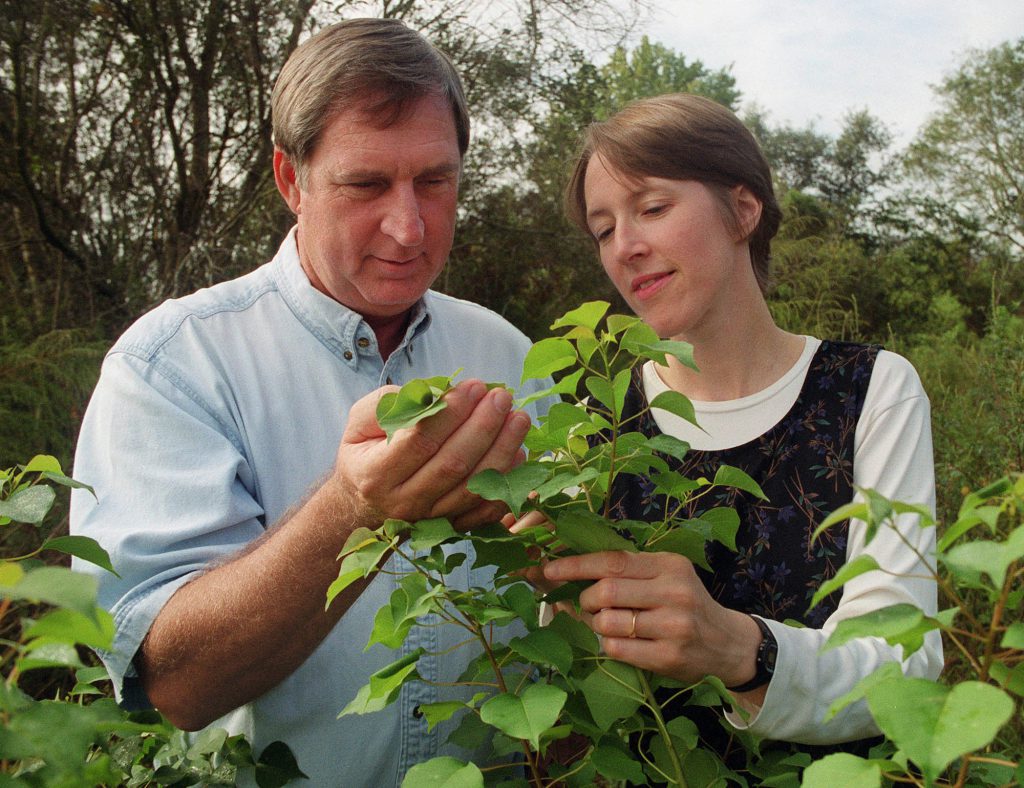
It is National Invasive Species Week, a time where everyone involved in natural resources, agriculture, and related fields works to raise awareness about this issue. It is an issue that costs huge sums of money to control and address, impacts economic sectors, and requires constant inspections at ports of entry to prevent new invasives from expanding the problem. Unfortunately for us, invasive species do not recognize international borders or state and local boarders for that matter. The same is true about property boundaries, which makes controlling them on the landscape difficult. They do not politely stop at the property line. So, what are we to do about the infestation when it crosses a boundary?
In Florida there is no law that requires someone to treat or remove an invasive species from the landscape. Laws do exist that prohibit the importation of species and that prohibit propagation and planting of know invasive species. Cost share programs, grants, and other efforts exist to assist private property owners and public land managers with invasive control programs and encourage the control and eradication of invasives across Florida’s landscape. Across Florida, organizations called Cooperative Invasive Species Management Areas (CISMA’s) exist to help coordinate efforts and provide educational outreach. The CISMA that covers Walton and the surrounding counties is the Six Rivers CISMA, and this outstanding organization even crosses state boundaries to include adjoining Alabama counties. This cross-state collaboration is an outstanding example of working across boundaries to accomplish a common goal. You can learn about the Six River CISMA and it’s efforts to invasive species through their website (LOCAL PRIVATE LANDS ASSISTANCE – Six Rivers Cooperative Invasive Species Management Area (floridainvasives.org) ). Our outstanding University of Florida IFAS extension service provides research and education across the state to help inform control efforts and coordinate through a network of experts from research professionals to local county extension agents. All of these efforts are making great progress in the control and management of invasive species.
One issue still stands out as a major challenge in taking on invasives, and that is that the ability to do control stops at a property line. This is especially true for some of our worst invasives like cogongrass, Japanese climbing fern, Chinese privet, and tallow tree; just to name a few. While animals move and you can trap or remove them as they come across your property; plants stay in place and often spread in an area. If that area happens to be right along a boundary, something like a fence row, the infestation often spreads across the property line. Add to that the fact invasive species, because of the disturbance and vegetation changes, often thrive and colonize in areas like fence rows and you have a major issue. That plant doesn’t see that posted sign and the property owner must stop any treatment effort at that point. Legally a landowner cannot cross a property line, and is liable for doing so especially when mowing, burning, or spraying herbicides. Putting herbicide on a neighboring property, even if it was accidental drift, is a major no go and can land the two parties in court. At best in this situation a property owner has a good relationship with neighbors and can work something out to control the infestation. If not, the treatment must stop where the ownership stops.
Why is it a problem that a treatment stops at the property boundary? Well, cogongrass is a great example. Cogongrass is a major problem in Walton County, and across the Panhandle in general. The western panhandle and southern Alabama are considered the epicenter of this invasive, and in Walton County it is spreading like wildfire. That’s somewhat literal too as this invasive grass massively increases fire intensity and spreads. My fellow extension agent from Gulf County, Ray Bodrey, just wrote a great article about this grass and the issues it is causing. I won’t duplicate his effort and expound on how to identify it. You can see his article here NISAW: A Spreading Menace in Gulf County, known as Cogongrass | Panhandle Outdoors (ufl.edu). Needless to say, if two county agents list it as one of the top issues, then we need to focus on it.
This grass spreads rapidly and easily, especially along roadsides, right of ways, and fencerows. You might wonder why that is? Well it happens to love to hitch a ride on equipment or move in contaminated fill dirt. Add to that it is tough to kill and takes multiple years of herbicide treatment to do the trick; and you have what has been identified as the Gulf Coast’s worst invasive. In fact, it is usually listed as one of the worst invasive species worldwide. Tack all that together and throw the fact that you cannot always work across a boundary and you’ve got quite the intractable issue. And that is just our top offender, we still haven’t touched tallow tree and the other of Six River CISMA’s “Dirty Dozen”.
What can be done then if invasives are such a herculean task that requires cross boundary management? We have several options, many of which I mentioned earlier in the article. Lots of work is being done right now by everyone from private landowners to local governments and even at the federal level. Here in Walton County the local public works has an active program to report and control cogongrass in the roadway and other county right of ways. They use in house and contract teams to report, track, and treat cogongrass infestations. This is a great effort and shows a great proactivity on the part of the county government. The program will go a long way in the congongrass control effort, but it still must stop at the right of way. If the infestation goes onto private property, it is then on the private property owner to have a control plan. Without some good communication the property owner may not even realize the problem is there.
Cogongrass is a good example of why it pays for a private landowner to treat an infestation too. This grass has no forage value and chokes out any other crops, lowering agricultural yields and values. It ruins yards, turf grass, and golf courses along with dulling and damaging mowing equipment. It contaminates fill dirt and borrow pits and then spreads to areas as development and construction occurs. If you are in the fill dirt business, clients that know usually reject soil that is contaminated or could be contaminated with cogongrass rhizomes. Forest landowners suffer major impacts from this invasive grass as it makes reforestation next to impossible, increases wildfire risk, makes using prescribed fire difficult at best, reduces timber yields, and ruins the habitat value for wildlife. An unchecked cogongrass infestation can ruin land values and it will do that as it spreads across onto other property.
This loss of land value is not just conjecture either. An article published in the Journal of Agricultural and Applied Economics from research performed by scientists from the University of Florida and the University of New York found that cogongrass infestations in slash pine forests reduce the return on investment and the land value. The study (Alavalapati et al 2007) looked at the impact of cogongrass infestation on rates of return and land values in several situations: no threat of infestation, infestation uncertain with no management, infestation uncertain with treatment by one landowner, and infestation uncertain with treatment by all landowners. The study found that cogongrass negatively impacts rental rates and the land value. To assess the land value, they used a forestry measurement called the Land Expectancy Value, which is a formula that uses the expected productivity of the land, input costs, and expected timber value to determine how valuable timberland is. The study found that the land value can be decreased by up to 50% on timberland. The study also found that the annual net returns per acre are decreased by between $17.00 and $25.00 depending on the infestation and management scenarios. Those are big economic and land value impacts, and that is just for forested lands. The big finding was that the scenario that resulted in the biggest loss of land value and returns was when only one landowner was treating. Alavalapati et al 2007 found that when control measures are undertaken by all landowners in an infestation zone the impacts are lowest and the most value is preserved. They suggest that the study results show the best outcomes will be when collaborative efforts are used. While the study only looked at cogongrass, the methodology and results are applicable to other invasive species. Working across that property line has real economic benefits as well as all the ecological and landscape benefits that come from invasive species control.
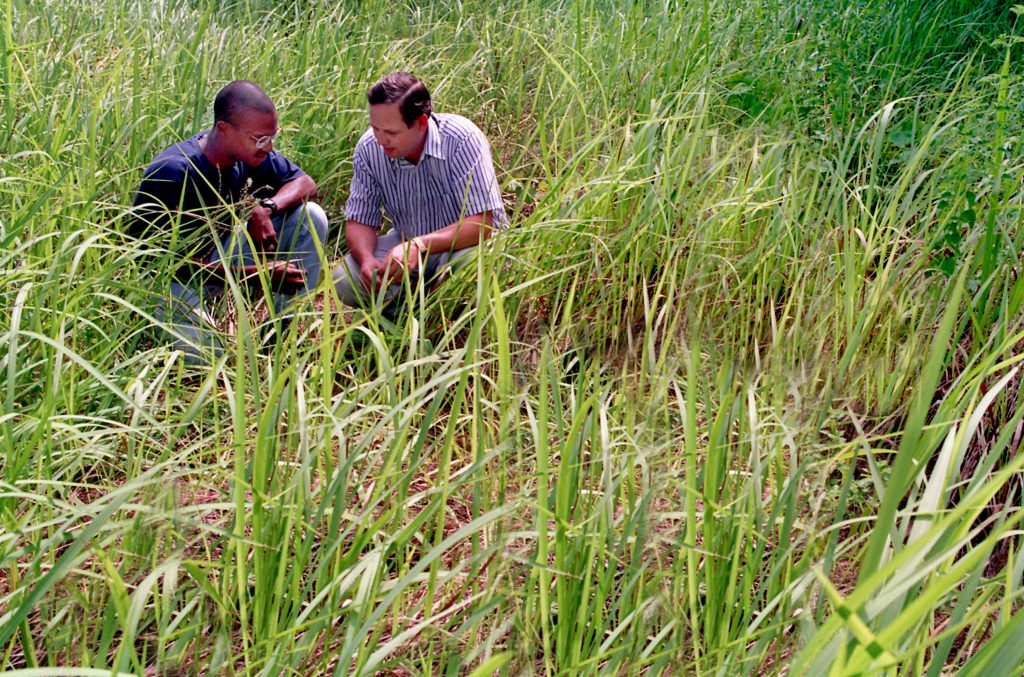
Practical experience shows that this collaborative approach works as well. Since 2004 the Georgia Forestry Commission and the State of Georgia have implemented a cogongrass task force. Georgia recognized the severity of the issue early on, to some degree from seeing what was occurring in Florida and Alabama. They also recognized the state could not completely prevent cogongrass from entering the state but could be proactive at control and eradication. They launched a collaborative effort lead by the Georgia Forestry Commission, where landowners and others would report congongrass and the infestation would be identified and treated at no cost to the landowner. The program was structured where they could work with other landowners at an infestation site as well. The program also implemented a tracking and follow up program, which tracked the infestation until it was eradicated or became inactive. In 2007, 72 Georgia counties had detections, but as of 2021, 34 of those 72 have no active cogongrass and 85% of all known cogongrass spots in Georgia are inactive (2021-Dirty-Dozen-List.pdf (gatrees.org). That is a huge success and something that can be replicated in other states. This program took federal and state funding, state and local government involvement, coordinated tracking, and reporting and detection from landowners. It could not have happened without this collaborative effort that reached across boundaries.
Could we see something like this in Walton County or across the Panhandle? Absolutely, we could definitely build a collaborative effort on one or more invasives. Cogongrass is a great place to start, and even though it is so difficult to eradicate we have evidence that a program can be successful. What it takes is reaching across boundaries and the “Think Global, Act Local” approach, or as the Florida Invasive Species Partnership puts it “Think Locally, Act Neighborly”. Florida does not have a statewide coordinated cogongrass control effort like Georgia, but the nature of the issue in Florida is very different. Given the size and scope, a Florida eradication program would likely look much different. But why wait for a statewide program like Georgia? It would be much easier to replicate a cooperative program on invasive species at the county level. It will take working across boundaries and communicating across communities and ownerships; but we know it works. The bottom line is that inaction will result in a growing and extending problem, spreading across more and more ownerships and areas. Invasives are not just an ecological or environmental problem either, they impact land values and our economy too. The information we have shows that when control efforts are sporadic and individual; economic impacts are actually higher because landowners controlling the invasive incur costs while infestations persist in an area. To keep our land base productive and valuable we have to work together and take community efforts. This is everything from identifying and tracking infestations to control and monitoring. If it can work with cogongrass, it will work with the other major invasives as well. Most of our greatest achievements as Americans, things like making it through the Great Depression, building the Transcontinental Railroad, or winning World War II, have been through collaborative efforts. Invasive species control is going to be the same thing, and research and results on cogongrass show reaching across boundaries works. Invasives move across boundary lines; so we need to work across them to be successful. A collaborative cogongrass effort would be a great start, and then we can expand.
References and Resources
Alavalapati, J. R. R., Jose, S., Stainback, G. A., Matta, J. R., & Carter, D. R. (2007). Economics of Cogongrass Control in Slash Pine Forests. Journal of Agricultural and Applied Economics, 39(s1), 61–68. https://doi.org/10.1017/s1074070800028947
Georgia Forestry Commission: Invasive Plant Control Program https://gatrees.org/forest-management-conservation/invasive-plant-control-program/
Georgia Forestry Commission 2021 Dirty Dozen List 2021-Dirty-Dozen-List.pdf (gatrees.org)
Six Rivers CISMA Webpage Home – Six Rivers Cooperative Invasive Species Management Area (floridainvasives.org) Florida Invasive Species Partnership Home – Florida Invasive Species Partnership

